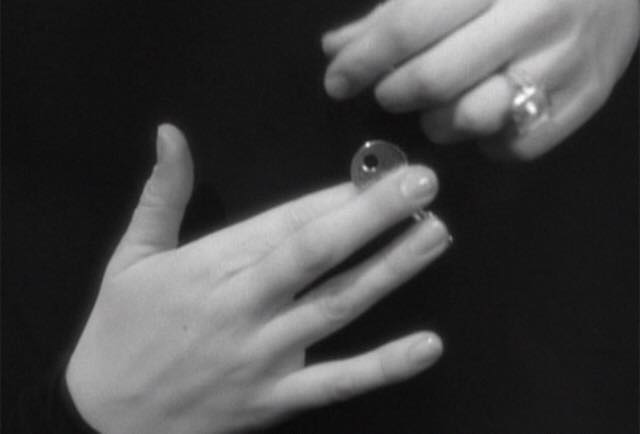
The effects of variable ring placement on audience perception of character predictability
A scientific paper
by Lokke Heiss
ABSTRACT
The presence of rings on fingers are frequently seen in settings where narrative film occurs. This study assessed the relationship between the choice of finger for the ring as a predictive component for the ring bearer’s essential character traits, and describes how digital ring placement may serve as a visual cue and a foreshadowing to the audience early in the narrative as to ring bearers attributes, and subsequently what genre or genre(al) direction the narrative may follow. As such, over 200 films from multiple countries were sampled. The sampling of films was taken using the usual and customary cultural benchmarks, starting with the codification of narrative with TGTR (The Great Train Robbery) and ending with the Rat Pack Era’s Ocean’s 11 (ed. the only version that matters).
The sampling was done with a rigid enforcement of a pre-Code bias, and with concurrent strict nonenforcement of Hay’s Code rules. Other components of the study include the observation of physical nature of the ring itself to its diagetical role internal to narrative itself, with concurrent awareness of a ring’s symbolic power, its capacity for multivalency, and finally for its effect as a sliding signifier both to finger placement or to the ring bearer’s character arc – as we are talking about rings, the idea of a sliding signifier is double-encoded as both literal and metaphorical.
Conclusion: Although more research in needed to identify the relationship between digital ring placement as a way to predict foreshadowing and character revelation in film narrative, findings suggest a need to sensitize film students and cineastes as to: 1) The merits of looking at which finger a ring is worn when a character is first introduced in a film, 2) To consider the type of ring and finger placement as a Stanislavskian external manifestation of the actor’s “experiencing the role” and 3) To consider that the notation of both location and progression of ring placement may also give a character’s starting point in his “through-line” in the narrative, and will give the viewer a better overall appreciation of the how the actor will pursue the character’s superobjective.
Discussion
“Plutus himself,
That knows the tinct and multiplying med’cine,
Hath not in nature’s mystery more science
Than I have in this ring“
Shakespeare, “All’s Well That Ends Well”
The time has come not to talk about cabbages and kings, but of Murphy beds and rings. One evening, after a day of watching movies at the Cinecon Film festival in Los Angeles, I drifted over to a nearby bar with my friends, a group called the Daughters of Naldi, for a rousing discussion about the films we had just seen.
The conversation shifted from Douglas Fairbanks to the typical kind of apartments people lived in during the Classical Hollywood period, and then to how these apartments were furnished, and then to the subject of Murphy Beds. For those uninitiated, a Murphy bed is a bed pulled out of a wall, is popular even today as a space-saving device, and named after William Murphy, who patented a pivot and counterbalance design that made existing wall beds much more convenient to use. Murphy Beds are inherently funny; they move in strange and mysterious ways, and an entire generation of silent film comedians have somewhere in their careers, based one or more routines involving an encounter with a Murphy Bed. In the comedy One A.M. Charlie Chaplin takes up half of the film with his (very drunk) character merely trying to get into his very unwilling Murphy bed.
While the DoN crowd resolved to pursue the study of Murphy beds by make of a running list of films with Murphy beds, I chose to go a different direction. The idea of producing a list or inventory inspired me to pursue a separate investigation of something I had been noticing in an off-hand way for a long time – that is, rings worn in films. And to be clear, the interesting part of what I was noticing was usually not the ring itself, but on what finger the ring was worn.
With each scene in a film having the possibility of being densely packed with information, I reasoned how, where, and why an actor or actress wore a ring could provide a code to the audience – sometimes obvious, more often subtle – about the ring bearer. In particular, I posed a question to myself: Was ring placement more or less random – or by watching a lot of films, could I discern a typical code for each finger that would be predictive to the character’s personality or fate?
MATERIALS and METHODS
The Study – Methods Used:
I came into this idea of ring placement with the obvious knowledge that a ring on the “ring” finger would imply that the character was either engaged, married or committed in some way. But did the other fingers have their special code? I decided to investigate. My method of research was very scientific and precise – I watched hundreds and hundreds of movies, framing my time of particular interest from the silent era to about 1960, and paid attention (when I remembered) to always note what fingers the rings place and if the ring position changed as the story progressed. After years of study and untold number of films watched, here are my conclusions – but first a warning – this study is about characters in movies, not real life. Although there is obviously some connection of these ideas about rings to our cultural norms and expectations (otherwise these codes would not function the way they do), in real life there may be abundant and obvious reasons why a ring is worn on a particular finger that have no connection in any way to the topics discussed in this paper – to state one example among many, that’s maybe the only finger that the ring fits. As Freud famously said, “Sometimes a ring is just a ring.”
RESULTS
Using 1904 to 1960 (the dates of the Great Train Robbery and Ocean’s 11 as benchmarks) and with a hierarchical regression (R2 = TCM) my research demonstrated a B.S. (aka “applesauce” value less than my alpha value for significance, indicating a high level of significance for my ring theory. This means up to a 95% self-confidence level, I’m 100%, absolutely, totally correct about everything you are going to read further in this study. Note that the important element of ring placement is the finger, not the hand. Whether the ring is on the left hand or the right is of minimal importance compared to which finger the ring is on (for a movie audience, it’s much easier to “read” which finger is being used than to decide if one is looking at a right hand or left hand).
A Pinky Finger Ring – “Player or Poseur?”

Early in my research, I quickly decided that a “pinky ring” was the most obvious and clear-cut of all personality markers for finger choices, especially for men. As I watched films from the The Great Train Robbery up to the Rat Pack, I saw a long line of gangsters, rogues, rakes, and roués parade through my films, most if not all – at some point wearing pinky rings. These were men who wanted much and what they wanted, they took, and were almost always single, or acted like they were single. Women who wore pinky rings often were also presented as also having dubious or uncertain morals, although they were not as often tainted with a criminal element.
All in all, wearing a pinky ring for either sex is a code for what can be called in the common vernacular, a “player.”
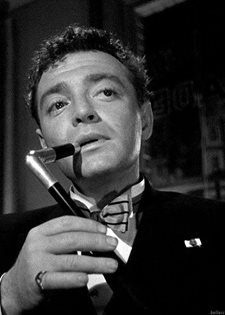
But there was a second group of characters who wore pinky rings, the “wannabes,” the characters who wanted all the world to think they ran in the same crowd as the rogues, rakes, and roués, as if just wearing the ring showed the world you were just as tough. I call this type of pinky ring bearer a “poseur.” As in the animal world, where harmless snakes can copy the colors of venomous ones to reap the reward of the fear and respect of others, this group of men attempt to adorn themselves with a similar type of marking.
As one considers the two groups, one sees an interesting overlap between one and the other. Every poseur might have a little player in him, and certainly every player has some element of poseur. After all, a supremely confident male – a “zen master of masculinity” wouldn’t need a marker to announce the fact. Another element at play is that much of the drama you are about to see may be the very question asked by the presence of the ring: Is this man going really to walk the walk or talk the talk? Or is he going to fold under the first sign of danger and run for safety?
To confuse the issue slightly, not all pinky rings on men signify a criminal background or forecast an evil or salacious intent. Sometimes men who belong to an armed service, or social or professional organizations wear pinky rings as a sign they are part of a fraternal group – a band of brothers, so to speak. The fraternal or professional nature of pinky rings is especially evident in European films from this period.
While the context of the story can help the viewer decide on “what side of the tracks” this band of brothers is located (legal or criminal?), the character foreshadowing of pinky ring worn by a man still folds into the larger question the narrative will ask of its owner: “player or poseur?” The bearer of this particular type of pinky ring may not be a gangster or criminal, and in some settings may actually be the hero of the story, but the fact remains that his pinky ring is still giving us a code for masculinity and virility, which also usually means on some level he is single and sexually available. If the wearer of a pinky ring turns out the be the lead role in a story with a romantic plot, watch for the ring to disappear somewhere in the third act.
Pinky rings are the easiest and most predictable of rings to look for, so understanding them is Ring Placement 101.
A Ring on the Ring Finger – “Commitment”
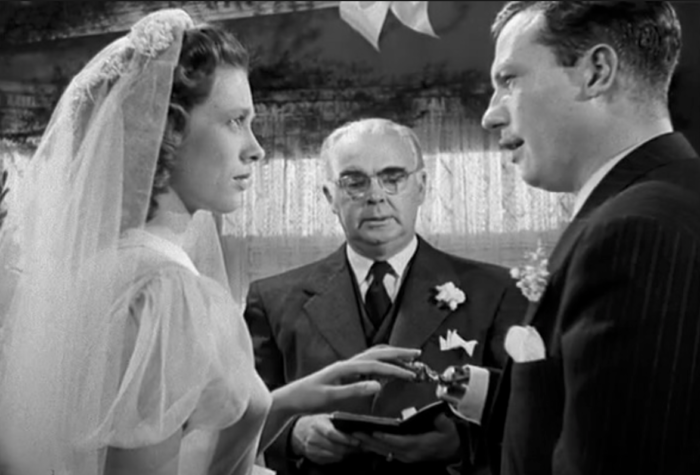
Cathy O’Donnell and Harold Russell in The Best Years of Our Lives (1946)
You don’t have to be a ring scholar to know that a ring on this finger means that character has made a commitment, promise or pledge to something or someone. Commitment does not always mean a promise of marriage, it can be to an artistic passion, cause, or even to a religious idea. Although a ring finger is the most standard (and almost universally recognized) code for any finger, even this placement has its complexities. For example, when combined with rings on other fingers, the issues of commitment take on a more nuanced reading. Or the nature or type of ring itself can bring an ironic commentary to the customary idea of what a ring finger is supposed to signify.
A Middle Finger Ring – “A Woman of the World”
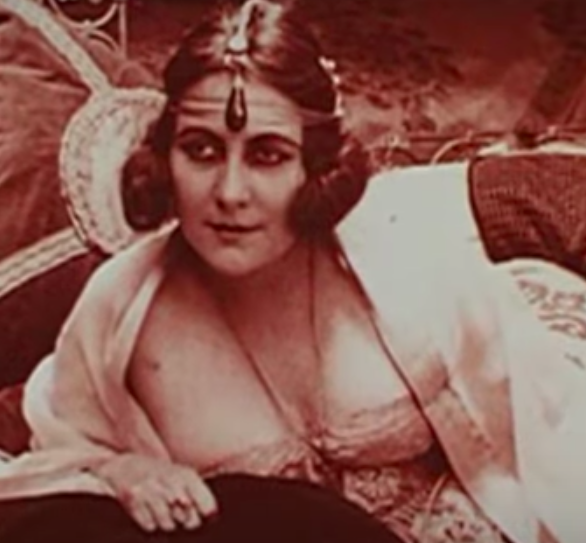 Stacia Napierkowska in The Queen of Atlantis (1921)
Stacia Napierkowska in The Queen of Atlantis (1921)
A ring on the middle finger is much more often seen on a woman than a man, and in terms or reading or decoding its message, has the richest number of possibilities. But if one sums up the message of the middle ring finger, it is a symbol of sophistication. A woman who wears this ring is a “woman of the world,” someone who has learned about life by study and experience, someone who is not an ingénue.
But let us keep in mind that as not all poseurs wear pinky rings, the character in the drama you are watching may fashion herself as the mostly worldly women ever, when by other clues we know that she’s not only just “fallen off the turnip truck,” she might not even know what that expression means.
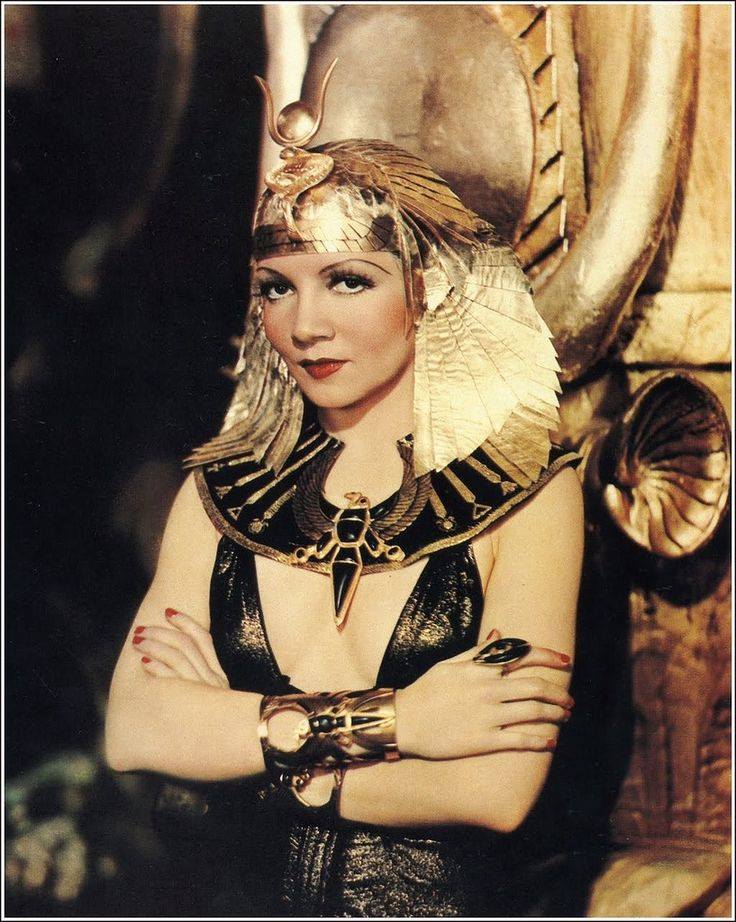 An Index or Pointing Finger Ring – “The Adventuress”
An Index or Pointing Finger Ring – “The Adventuress”
In all the years I’ve been watching movies and keeping track of rings, a ring on the index finger is perhaps the most reliable predictor for who that person is. For men, it codes for characters who have already experienced exotic and dangerous activity and are looking for even more thrills and excitement. Women who wear this ring are powerful, and are also risk-takers, looking for adventure. Shy characters (unless under the cloak of disguise) do not wear this index finger rings, this is a ring worn by men and women who are used to being in command of their destiny.
A Thumb Ring Finger – “A King, an Empress, Someone Exceptional”
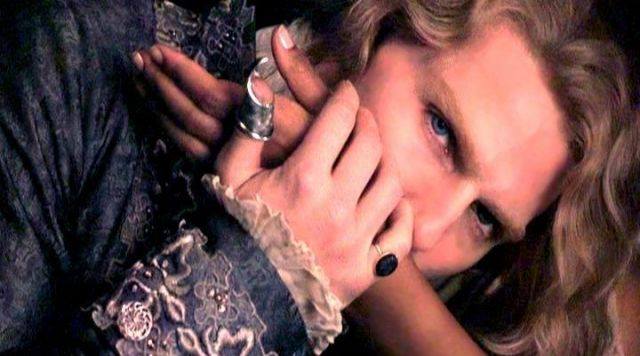
Tom Cruise in Interview With A Vampire (1994)
A ring on this (specialized) finger is rarely seen in a film. It marks a ruler, a king or queen, an emperor, although it could be worn by a perhaps a kingpin of a crime organization, or someone especially skilled. A thumb ring is a ring of power. Whoever wears a thumb ring is “master of his domain.” Not seen often in films unless one is watching an historical epic, or a Fast and Furious sequel (Ed. Note – we will tolerate this brief excursion into post-1960 film to make a point).
No rings on any finger: “Off The Grid”
Having no rings on any finger means that at that moment, the character is not playing the Ring Game. Sometimes the lack of a ring might mean something, obviously the character of youth or an ingénue would be examples of someone expected to not wear a ring, or there may be a plot point involving the loss of a ring, but otherwise there is no way to reliably forecast a character’s attributes or their fate by a lack of a ring. Wait patiently for a ring to later appear, or obsess on whether or not a Murphy bed will appear later in the film.
Rings on more than one finger: It’s Complicated
Surprisingly few characters in films wear more than one ring, when they do, it’s often related to a performance-related function, such as appearing in a night club act, or a scene of heightened awareness of appearance (such as being dressed like a gypsy), or in some way related as being in a masquerade. My general rule about rings on multiple fingers: The more rings you see, the more the rings are about an overall sense of costume (for example an excess of ornamentation), and not a particular commentary about the rings themselves.
But there are exceptions to this generality, in particular the pinky/ring finger combination. An example is John Stahl’s Husbands and Lovers (1924) where a wife (played by Florence Vidor), long exasperated by her husband’s lack of attention, begins to flirt with a family friend. The storyline is anticipated by the fact that at the beginning of the story she is wearing not one but two rings, her wedding ring and – yes, you guessed it, a pinky ring. She has a commitment of sorts, but the pinky ring tells us the arrangement is on shaky ground. The fact she has rings on both these particular fingers will (to a practiced eye) foreshadow the nature of what the storyline in this film will explore.
In the previous example from the film, Interview With A Vampire, one can see that Tom Cruise’s character has both a thumb and pinky finger. The combination of a pinky ring (player) and thumb ring (power) has an obvious meaning: This man is “mad, bad, and dangerous to know.”
Advanced Ring Theory
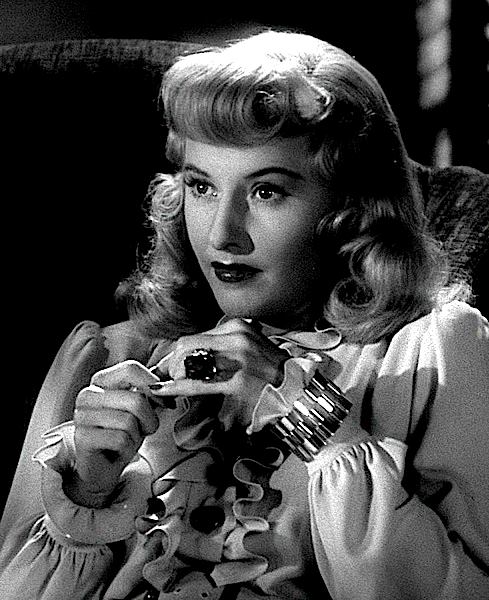 Earlier I mentioned that I primarily look at the which finger has the ring instead of the ring itself, but sometimes the nature of the ring itself can cast an ironic twist to the usual rules. A good example of this is in the classic film noir, Double Indemnity, starring Barbara Stanwyck and Fred McMurray. When we first see Stanwyck in her role of Phyllis Dietrichson, she is wearing a ring on her fourth finger. But this is no “ordinary” wedding ring, rather it’s large and gaudy, so garish that it’s perhaps not a wedding ring at all, even if it’s on the “correct” finger.
Earlier I mentioned that I primarily look at the which finger has the ring instead of the ring itself, but sometimes the nature of the ring itself can cast an ironic twist to the usual rules. A good example of this is in the classic film noir, Double Indemnity, starring Barbara Stanwyck and Fred McMurray. When we first see Stanwyck in her role of Phyllis Dietrichson, she is wearing a ring on her fourth finger. But this is no “ordinary” wedding ring, rather it’s large and gaudy, so garish that it’s perhaps not a wedding ring at all, even if it’s on the “correct” finger.
Her character is breaking the “rules” of ring placement, or perhaps more accurately, bending the rules to her own purposes. And as we observe her “wedding” ring and watch her flirt shamelessly with McMurray’s character, we start to get a clue as to how many levels of duplicity she is going to show us.
Even More Advanced Ring Theory
 Rings are symbols, and more importantly, they are multivalent symbols, that is, they can have multiple meanings, even meanings that at the same time contradict each other (a lexicon example of this would be the word “white” which can be a symbol for strength or purity, but also can be a symbol for cowardice). Objects are less “fixed” than words, which can’t “jostle” and “slide” their meaning around as much, by contrast, objects like rings can be used as symbols to represent an almost limitless number of ideas; a promise of commitment, a bold statement of interest in adventure, to in the case of J.R. Tolkien, a representation of absolute power.
Rings are symbols, and more importantly, they are multivalent symbols, that is, they can have multiple meanings, even meanings that at the same time contradict each other (a lexicon example of this would be the word “white” which can be a symbol for strength or purity, but also can be a symbol for cowardice). Objects are less “fixed” than words, which can’t “jostle” and “slide” their meaning around as much, by contrast, objects like rings can be used as symbols to represent an almost limitless number of ideas; a promise of commitment, a bold statement of interest in adventure, to in the case of J.R. Tolkien, a representation of absolute power.
But one can focus on more traditional symbols for these rings and play directly with the codes and meanings in wonderful and contradictory ways. A great example of this is character of Sir Percy Blakeney played by Leslie Howard in the 1934 version of The Scarlet Pimpernel. Set in the time of the French Revolution, Howard’s character appears to be a useless British fop, worried only about his appearance and with no interest in politics. In reality, he is the heroic Scarlet Pimpernel, a man who courageously travels to France to rescue poor innocents from death by the guillotine.
 When looking at Leslie Howard in his fop role, one sees he’s wearing a pinky ring. But let’s decode and unravel what is going on – here is a player (in the sense that Percy is really a man of action and a hero) … posing a poseur (the fop is his disguise) …who as a fop, is posing as a player (extending the idea that a fop would like to pose as a version of masculinity, a man of action). Because the role involves a secret identity, here is a situation that this ring signifies not just one, but three separate layers of meaning, all performing their symbolic function at the same moment. And now that you know your Ring Theory, you can enjoy watching Leslie Howard’s performance all the more.
When looking at Leslie Howard in his fop role, one sees he’s wearing a pinky ring. But let’s decode and unravel what is going on – here is a player (in the sense that Percy is really a man of action and a hero) … posing a poseur (the fop is his disguise) …who as a fop, is posing as a player (extending the idea that a fop would like to pose as a version of masculinity, a man of action). Because the role involves a secret identity, here is a situation that this ring signifies not just one, but three separate layers of meaning, all performing their symbolic function at the same moment. And now that you know your Ring Theory, you can enjoy watching Leslie Howard’s performance all the more.
Conclusions, and A Discussion with Domitor About Early Film
The Domitor Society is a group of film scholars who are especially interested in early film – from its beginnings to approximately 1915. During this year’s festival at Pordenone, I met with this group, and in reviewing my ideas about Ring Theory, a question came up: An obvious and important point is that the Ring Theory is not about decisions people make in real life, but rather is a tool that can be used to foreshadow character attributes in fictional stories.
But there is an intersection, a locus between the reality and the diegetic world of the character, and that locus is the actor, because he or she (or someone they work with), does have to make that choice. In other words, Ring Theory has an extension into the real world, because it is also about the choices the choices an actor makes in performing her role. And here was the question posed by Domitor:
From film’s beginnings to a certain point where it matured as a business, (before vertical stratification changed the nature of cinema), actors often did their makeup and costuming, and certainly rings were part of that process. So are these ring placement codes any different in this early cinema? Where these codes scattered and haphazard, just as genre stories themselves were often inchoate and incomplete? Or did these ring codes arrive fully fleshed out from actor’s knowledge previous theatrical troupes and earlier traditions?
With this question in mind, the next day at the Verdi Theater I sat down for a program right up Domitor’s alley, a screening of short French films all made before 1915. The first of these films met all the usual codes, such as an older man (with a pinky ring) courting a young woman with no ring, and a film about a widower who wore both his wedding ring and a pinky ring – so far, everything was going to expectation.
And then came a wonderful and hilarious film with the name of The Vengeance of the Town Constable (1912), a comedy farce directed by Louis Feuillade, about a newly married couple, the Brasems, who move into an apartment next to a town constable (Louis Leubas) who also happens to own the building. This constable loves to play his horn (badly) at all hours of the day or night, and the noise starts to drive the newlywed couple on the other side of the wall crazy.
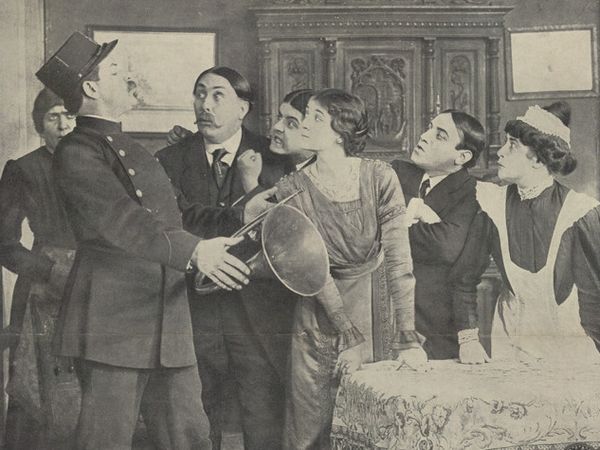
Yvette Andreyor in The Vengeance of the Town Constable (1912)
Because the constable owns the building and is also the law of the town, the couple have little recourse to stop the noise; finally the bride (Yvette Andreyor) goes to her doctor for help, and the doctor prescribes a treatment that seems completely sensible in the context of their desperate situation, he tells her to construct a life-size puppet who looks exactly like the constable, that she can torture whenever she wants. This unusual treatment works like a charm, as Mrs. Brasem enjoys beating on the dummy. Meanwhile, curious as to why his neighbor no longer seems to mind the awful noise, the constable drills a hole in the wall and is shocked to apparently see himself sitting in his neighbor’s apartment! And then things just even stranger in this delightful knockabout comedy about the trials of living next door to people you hate, which is about as good a way to describe the “human condition” as one can find.
So what does this great film have to do with rings? As I followed the antics of poor Mrs. Brasem as she ran helter-skelter trying to keep up with torturing puppets and keeping the constable out of her kitchen, I tried to count her rings – she had so many it was hard, but I eventually counted eight in all, including two thumb rings. The only fingers with no rings were of all things, her ring fingers!
Then it hit me: A French farce where everything is upside-down and nothing is as it seems – in this setting, Yvette Andreyor, who wonderfully conveyed the craziness of dealing with an impossible neighbor, was adding her own signature to her character – as one more farcical element on display, her newlywed character was wearing rings on every finger but the right one. Was this her own decision, done at the spur of the moment when she was getting her costume together? Or did she do this with help or guidance from the other actors, or from Feuillade? It doesn’t matter, because by noticing her subtle but clever addition to her part, I felt like I had reached across a century of time to appreciate a small but funny “inside joke” from a talented actress. Well done, Yvette Andreyor, and my hope is that those who follow my Ring Theory will find their own small but personal treasures.
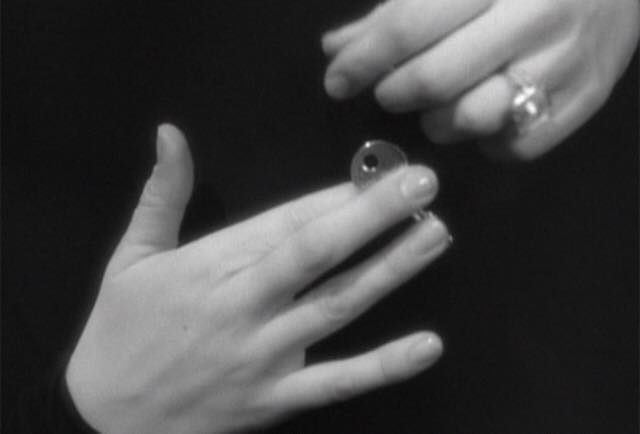
A take home test. Name the film, then see how many layers of meaning you can come up regarding the ring in the photo. Is there any irony that this is a wedding ring? Does the ring stand for perhaps several different kinds of commitment?
REFERENCES
TCM: A whole lot of movies (mostly black-and-white)
MoMA: A lot more movies, usually in Theater 1 and 2, occasionally Theater 3
Film Forum: So many black-and-white movies you wouldn’t believe how many I’ve seen there, mostly in that small theater to the right as you go in. Great programming by the way.
Days of Silent Film Festival, Pordenone: So many movies I had to write reviews just to keep track of them all. Mostly silent and black-and-white, occasionally a synch-sound film creeps in, we try not to notice.
Thanks, Domitor for your suggestions about this paper. Here is a link to their site- https://domitor.org/
(Additional references deleted for brevity.)
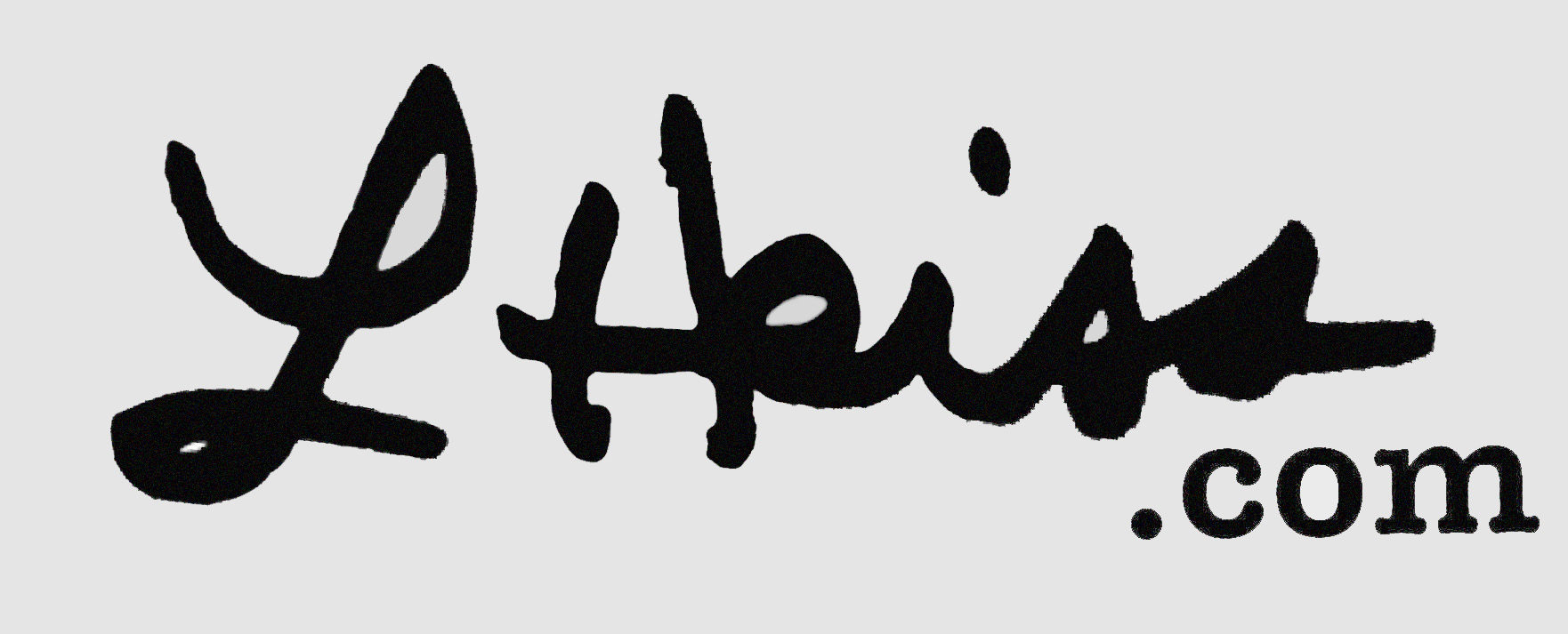


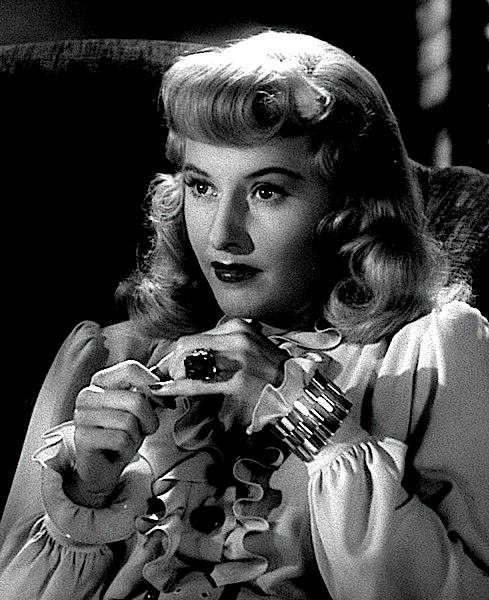
One thought on “Ring Theory”
Extra Extra Credit question: Humphrey Bogart wore a ruby ring given to him by his dying father, and wore it on his right, fourth (ring) finger in many of his films. Do you think it ‘coded’ him in reference to the characters he played and if so, why?